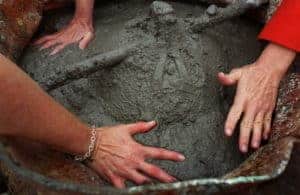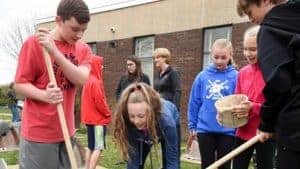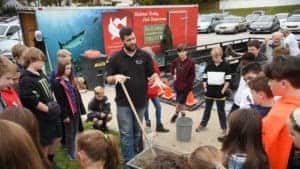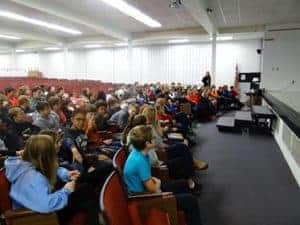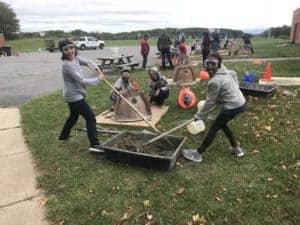Support the Living Reef Action Campaign
Support our efforts to build artificial reef balls with students & the community
Get Involved
get your students involved
help out on reef ball build days
gather your team to build reef balls
By working with educators, we collectively provide a meaningful experiential environmental learning for students. The building of concrete reef balls, which are later seeded with oyster spat and deployed in the Chesapeake Bay to create new three dimensional reef structures, provides a unique perspective for students, teachers and parents into the importance of the oyster in the regional ecosystem.

Objectives of LRAC
Three-dimensional oyster reefs used to exist in the Chesapeake Bay. Years of overharvest and disease have broken down these reefs and the oyster population to a very small portion of what historically existed in the region. A three-dimensional oyster reef provides habitat for a number of species, and is there very foundation of the Chesapeake Bay ecosystem. Reefs provide shelter for many juvenile fish, crabs and invertebrates, and by providing oysters an opportunity to vertically like they have historically. By jumpstarting their vertical growth off the bottom, reef balls give oysters better access to algae rich water to eat, and protect them being smothered by sediment, increasing the survive ability of oysters and other aquatic creatures and the success of overall habitat restoration
By teaching students about oyster restoration and why three-dimensional reefs are important to the recovery of the Chesapeake Bay. Schools engage in class hands on projects, and the construction of reef balls which will eventually be deployed in the bay to create habitat and jump start the restoration of three-dimensional oyster reefs. By participating in LRAC, Students, teachers and parents learn why oysters are essential to the health of the Bay and become a part of the solution to providing a bright future for our shared natural resources.
CCA Maryland has partnered with Stevenson University to monitor the success of our reef building efforts, and advance the science of habitat restoration. The studies which are underway include components related to changes in water clarity and quality, biodiversity, oyster growth and recruitment, and an evaluation of different reef building techniques and practices.
LRAC news coming soon!



